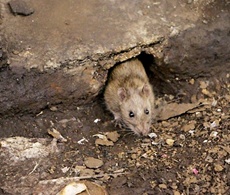Oh, rats! Filthy humans caused Europe's 14th century plague: study
18 Jan 2018
Rats have been unfairly blamed for spreading the plague, or Black Death, that killed millions of people in medieval Europe, according to researchers.
 According to a new study, the disease might have spread from person to person through human-feeding parasites, including fleas and lice.
According to a new study, the disease might have spread from person to person through human-feeding parasites, including fleas and lice.
The researchers write in their study, published online yesterday in the journal Proceedings of the National Academy of Sciences that the findings challenge "the assumption that the plague in Europe was predominantly spread by rats."
Plague, is caused by a bacteria called Yersinia pestis, carried by rodents and their fleas. The disease is perhaps best known for its toll of an estimated one-third of the population in Europe in the 1300s. The pandemic has come to be known as Black Death. However, researchers are not certain about how exactly the disease was transmitted during the pandemic.
The mode of transmission of the disease in modern times is through fleas that have fed on infected rats biting humans. The same mode of transmission could have been behind Black Death, for instance, when infected rats died, their flea parasites could "jump" from the recently dead rat hosts to humans, according to the Centers for Disease Control and Prevention.
The researchers used mathematical equations, to create three different models of plague transmission, during a series of outbreaks in Europe called the second pandemic, which includes the Black Death, and occurred during the 14th through 19th centuries.
According to one model, the disease was spread from rats to fleas to people; while a second model assumed the disease was spread from human fleas and body lice to other people; and according to a third model, the disease was spread from person to person through the air, which happens only when people develop a form of plague known as pneumonic plague.
The researchers used publicly available data on plague deaths in nine regions during the second pandemic, and found that the human parasite model best reflected death rates in seven out of the regions, as against the other two models.
"Overall, our results suggest that plague transmission in European epidemics occurred predominantly through human [parasites], rather than commensal rat or pneumonic transmission," the researchers wrote in their paper.
''The classic example is the rat-flea transmission,'' said lead study author Katharine Dean, a research fellow at the University of Oslo who studies infectious disease www.washingtonpost.com reported.
A new mathematical model developed by Dean and he colleagues in Norway suggests, that rodents have been unfairly maligned for their role in the pandemic.






























